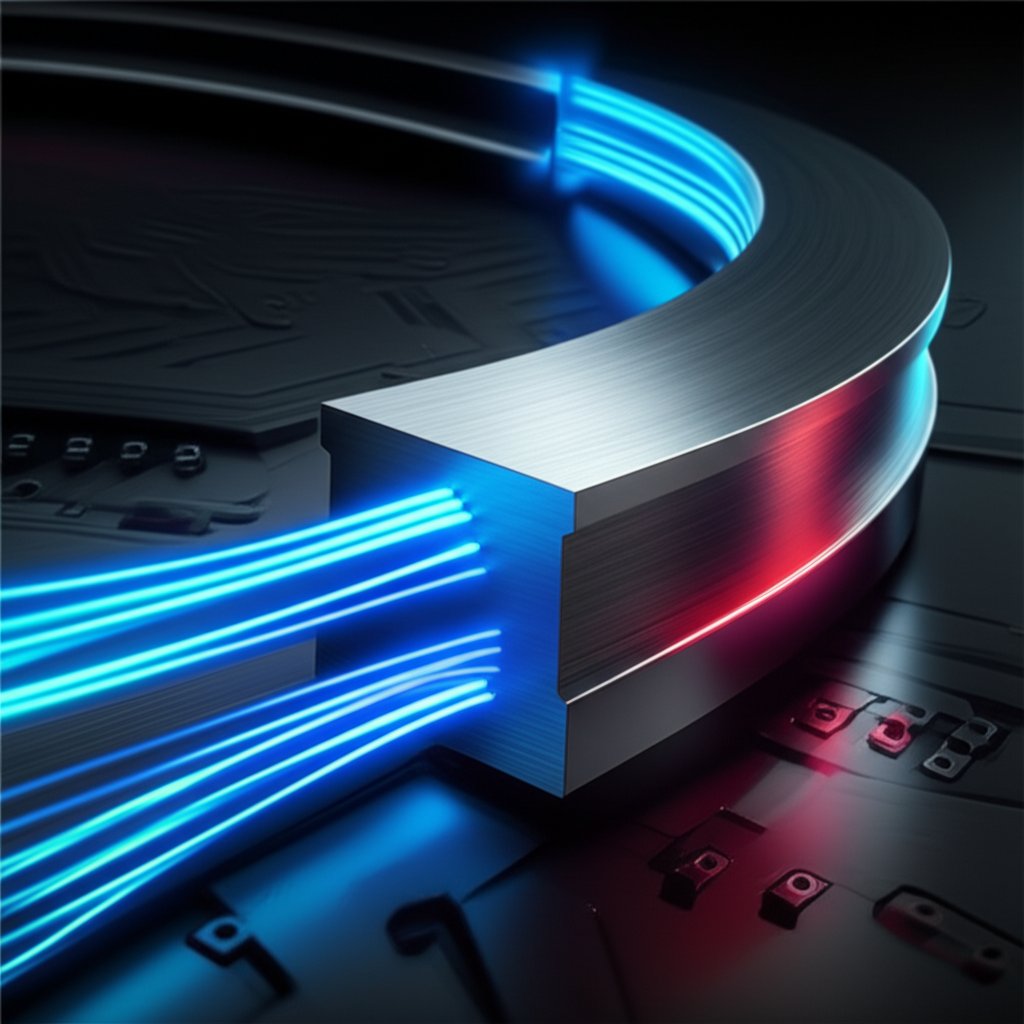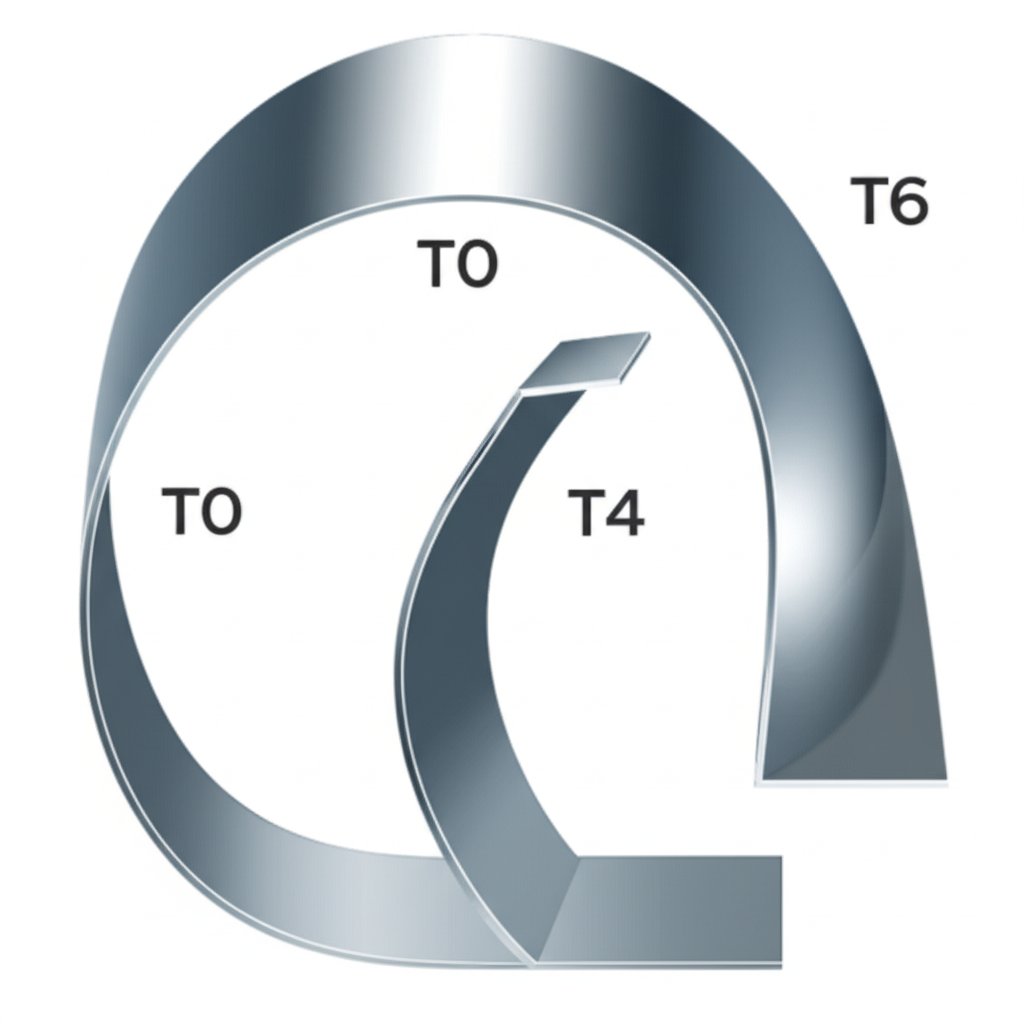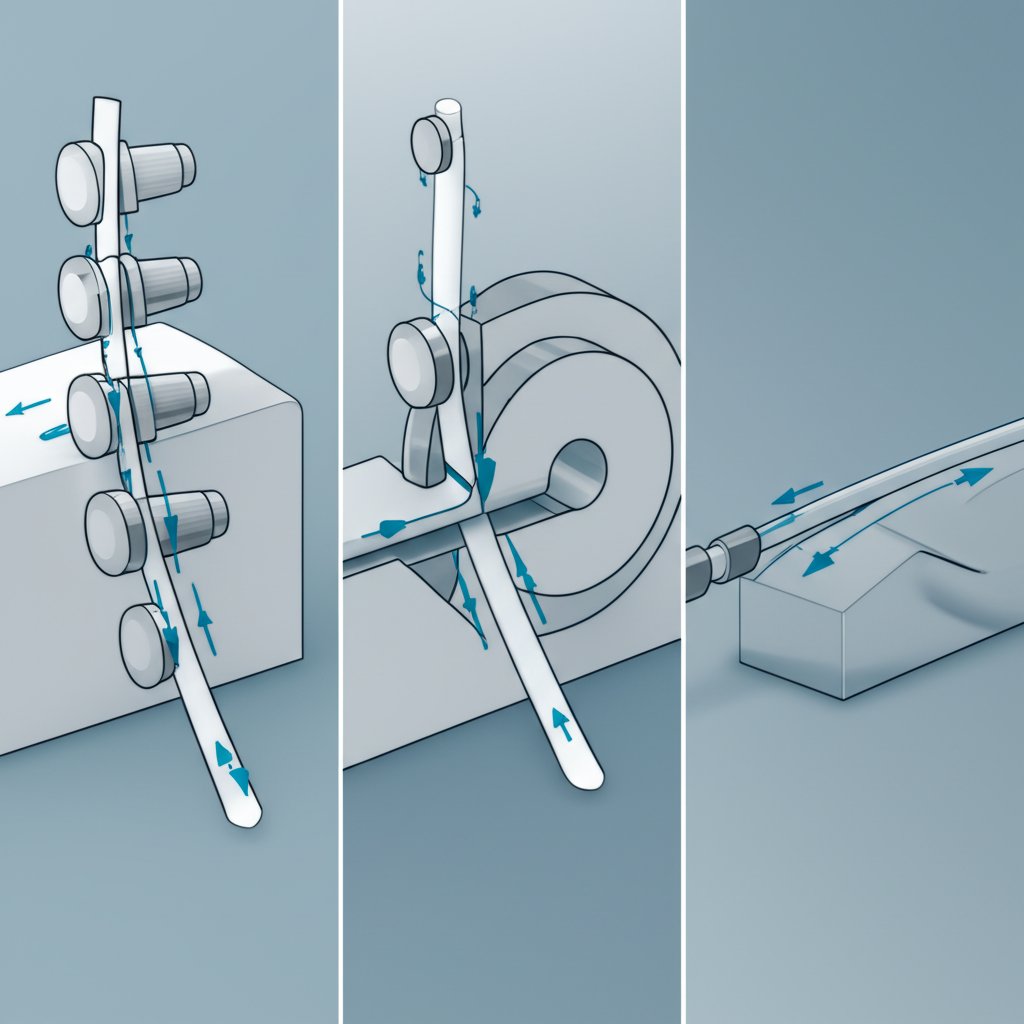Mastering Bend Radius Limitations for Aluminum Profiles

TL;DR
The minimum bend radius for extruded aluminum profiles is not a fixed value; it's a critical engineering parameter determined by several interconnected factors. The achievable radius depends heavily on the aluminum alloy and its temper, the profile's wall thickness and geometry, and the specific bending method used. Attempting to bend a profile beyond its calculated limit can lead to defects like cracking, buckling, or unacceptable distortion, compromising the part's structural integrity and aesthetic quality.
Understanding Minimum Bend Radius
In metal fabrication, the minimum bend radius is the smallest radius to which a profile can be bent without causing material failure or significant defects. When an aluminum extrusion is forced into a curve, the material undergoes immense stress. The outer surface is stretched and experiences tension, while the inner surface is compressed. If the tensile force on the outer wall exceeds the material's elasticity, it will begin to thin, weaken, and eventually crack. Conversely, the compressive force on the inner wall can cause it to wrinkle or buckle if not properly supported.
Exceeding this limitation is not just a cosmetic issue; it's a structural one. Microcracking, which may not be visible to the naked eye, can severely weaken the component, making it susceptible to failure under load. Therefore, understanding and respecting the minimum bend radius is fundamental to designing and manufacturing reliable, high-quality curved aluminum parts. It ensures both the functional performance and the intended lifespan of the final product.

Critical Factors That Determine Bending Limitations
Calculating the precise bend radius for an extruded aluminum profile requires a detailed analysis of several key variables. Each factor plays a crucial role in how the material will respond to the stresses of forming, and overlooking any one of them can lead to costly production failures.
Aluminum Alloy and Temper
The choice of alloy and its temper state is arguably the most significant factor. Different aluminum alloys have distinct mechanical properties, and heat treatment (temper) further modifies these characteristics. For instance, alloys in the 6XXX series are popular for their excellent combination of strength and formability. However, their temper dramatically affects bendability. A profile in a T4 temper (solution heat-treated and naturally aged) is more ductile and can accommodate a much tighter bend radius than the same profile in a T6 temper (solution heat-treated and artificially aged), which is stronger but more brittle. As detailed in an article by The Fabricator, for very tight radii, a T4 temper is often recommended, while T0 (annealed) offers the best formability but the least strength. It is sometimes necessary to bend the aluminum in a softer temper and then apply a final heat treatment to achieve the desired strength.
Wall Thickness and Profile Geometry
The physical shape of the extrusion is another critical consideration. Profiles with uniform wall thickness are easier to bend because the material flows more evenly through the die. In contrast, profiles with varying thicknesses can experience uneven stress distribution, leading to twisting or distortion. The overall complexity and symmetry of the shape also play a major role. Asymmetrical profiles, like C-channels, are prone to twisting during bending because the forces are not balanced. According to insights from Gabrian, designing profiles with symmetry, rounded corners, and adequate internal supports can significantly improve stability during the bending process.
Bending Direction and Tooling
The orientation of the bend relative to the profile's cross-section—often called bending the "easy way" (against the weaker axis) or the "hard way" (against the stronger axis)—directly impacts the minimum radius. Bending the hard way requires significantly more force and generally results in a larger minimum bend radius. Furthermore, the tooling and machinery used are paramount. Properly designed tools support the profile, prevent collapse, and mitigate distortion. The choice of bending method itself, which is discussed in the next section, is intrinsically linked to the achievable radius.
| Factor | Impact on Bend Radius | Consideration |
|---|---|---|
| Alloy & Temper | Softer tempers (e.g., T4) allow for tighter radii. Harder tempers (e.g., T6) are stronger but require larger radii. | Select temper based on the final strength requirements versus the desired curvature. Consider post-bend heat treatment. |
| Wall Thickness | Thicker walls generally require a larger bend radius. Uniform thickness is ideal for preventing distortion. | Avoid significant variations in wall thickness within the profile design. |
| Profile Symmetry | Symmetrical profiles are stable and bend predictably. Asymmetrical profiles tend to twist. | Design for symmetry along the bending axis whenever possible to minimize torsional forces. |
Common Bending Methods and Their Influence on Radius
The technique used to bend an aluminum extrusion directly influences the quality of the curve and the minimum achievable radius. Each method has distinct advantages and is suited for different applications, production volumes, and profile complexities.
One of the most common techniques is roller bending, which uses three or more rollers to gradually form a curve along the length of the profile. This method is versatile and cost-effective for large-radius bends and creating full circles, but it can offer lower precision for tight radii and may need multiple passes to achieve the final shape. Rotary draw bending is another popular method that provides high precision by clamping the extrusion and drawing it around a rotating die. It is excellent for achieving tight, accurate bends and can handle complex profiles, especially when supported by an internal mandrel to prevent collapse.
Stretch bending involves gripping the extrusion at both ends and stretching it slightly while wrapping it around a forming die. This process puts the material under tension, which helps minimize wrinkling and spring-back, resulting in highly accurate curves with minimal cross-section distortion. However, it is typically limited to larger radii. For simpler applications, ram bending (or push bending) offers a low-cost solution where a hydraulic ram presses the profile against supports, but it provides less control over the profile shape and is more likely to cause deformation.
Choosing the right method is critical and often requires deep expertise, especially for complex geometries or demanding specifications. For automotive projects demanding precision-engineered components, it is often beneficial to consult a specialist. For example, a partner like Shaoyi Metal Technology provides comprehensive services from prototyping to production under strict quality systems, helping to select the optimal bending process and material for highly customized parts.
Design Best Practices for Bendable Extruded Profiles
Engineers can significantly improve the bendability of an aluminum profile and avoid manufacturing issues by incorporating best practices early in the design phase. A well-designed profile not only bends more easily but also results in a higher quality, lower-cost final product. Adhering to these guidelines can prevent common defects like cracking, distortion, and twisting.
- Maintain Uniform Wall Thickness: A profile with consistent wall thickness allows the aluminum to flow evenly during extrusion and respond predictably to bending forces. If varying thicknesses are necessary, make transitions as gradual as possible to avoid stress concentrations. This is a key spec highlighted by industry experts like Silver City Aluminum.
- Specify Generous Corner Radii: Sharp internal and external corners are major stress points where cracks are most likely to form during bending. Designing profiles with rounded corners, even with a small radius, distributes stress more evenly and dramatically improves formability.
- Design for Symmetry: Whenever possible, design the profile to be symmetrical along the axis of the bend. Symmetrical shapes are inherently more stable and resist the natural tendency to twist under bending pressure. If asymmetry is unavoidable, consider adding temporary features that can be machined off after bending to provide support.
- Incorporate Internal Support Ribs: For hollow or complex profiles, adding internal stiffeners or ribs in the plane of the bend can provide crucial support. These features help prevent the walls from collapsing or becoming concave, ensuring the profile maintains its intended shape.
- Position Features Thoughtfully: Special features like screw ports or nut tracks should be placed carefully. A screw port aligned with the bending radius can act as a stiffener, aiding the process. However, if placed perpendicular to the bend, it can deform or collapse unless properly supported internally.

Frequently Asked Questions
1. Can you bend extruded aluminum?
Yes, extruded aluminum is highly suitable for bending due to the metal's natural ductility. The success of bending depends on choosing the correct alloy and temper, using a proper bending method, and designing the profile with bendability in mind. It is a common fabrication process used across many industries, including architecture, automotive, and industrial equipment.
2. What is the minimum allowable bend radius?
There is no universal minimum allowable bend radius for aluminum. It must be calculated for each specific case based on factors like the material's alloy and temper, the profile's wall thickness and width, the complexity of the shape, and the bending technique being used. Attempting to use a generic value can easily lead to material failure.
3. What is the minimum bend radius of 6061-T6 aluminum?
6061-T6 is a strong but less ductile alloy, so it requires a more generous bend radius compared to softer tempers. While there's no exact formula without knowing the profile geometry, a general rule of thumb for 6061-T6 sheet metal is an inside radius of 1.5 to 4 times the material thickness. For extrusions, this can be even greater depending on the shape's complexity. Always consult with a fabrication specialist or refer to engineering handbooks for specific calculations.
 Small batches, high standards. Our rapid prototyping service makes validation faster and easier —
Small batches, high standards. Our rapid prototyping service makes validation faster and easier — 
